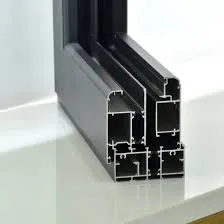cast iron castings
The Versatility and Significance of Cast Iron Castings
Cast iron castings have played a pivotal role in the development of various industries, owing to their durability, versatility, and ease of manufacturing. This remarkable material, primarily composed of iron, carbon, and silicon, has been utilized for centuries and continues to be a cornerstone in modern engineering and construction applications.
Historical Significance
The history of cast iron dates back to the Han Dynasty in China (approximately 200 BCE), where it was initially utilized for weapons and tools. By the 18th century, it gained prominence in Europe as the Industrial Revolution surged forward. The advent of mass production techniques allowed for the creation of complex shapes and components, thus making cast iron a preferred material for many applications.
Properties of Cast Iron
Cast iron is renowned for its excellent casting properties. The ability to create intricate shapes and sizes without the need for extensive machining makes it an efficient choice for manufacturers. The material is highly resistant to wear and deformation, making it suitable for heavy machinery and components subjected to high stress. Moreover, its excellent thermal conductivity enables cast iron to distribute heat evenly, an essential feature in cookware and heating systems.
One of the most distinctive properties of cast iron is its ability to dampen vibrations. This quality is especially valuable in the manufacturing of machinery bases and engine blocks, where noise and vibration can affect performance and longevity. Additionally, cast iron can be produced in various grades, allowing engineers to select the appropriate type for their specific needs—whether it be ductile, gray, or white cast iron.
Applications Across Industries
The applications of cast iron castings are broad and diverse. In the automotive industry, cast iron is commonly used for engine blocks, cylinder heads, and exhaust manifolds. Its durability and heat-resistance make it a perfect fit for high-temperature components. Additionally, cast iron is extensively used in the manufacturing of machine tools, where its strength and ability to absorb vibrations enhance precision and operational stability.
cast iron castings

The construction industry also relies heavily on cast iron, particularly for pipes, manhole covers, and architectural elements. Cast iron pipes are renowned for their longevity and resistance to corrosion, making them ideal for sewage and water systems. In architecture, cast iron’s aesthetic appeal has led to its use in decorative features, such as railings and facades, thereby enriching urban landscapes.
Innovations in Cast Iron Technology
Recent advancements in metallurgy and casting techniques have significantly enhanced the properties of cast iron. Innovations such as ductile iron, which contains nodular graphite, provide increased strength and ductility compared to traditional gray cast iron. This evolution has opened up new possibilities for applications in sectors that demand higher performance standards, such as aerospace and renewable energy.
Furthermore, the rise in additive manufacturing (3D printing) is beginning to influence the world of cast iron casting. Techniques that incorporate 3D modeling enable manufacturers to produce complex geometries that were once deemed impractical, further expanding the design possibilities for cast iron components.
Environmental Considerations
As industries strive to reduce their carbon footprints, the production processes for cast iron castings are also evolving. Manufacturers are increasingly adopting recycling methods that utilize scrap iron and other materials, thus minimizing waste and promoting sustainability. Moreover, advancements in melting and casting technologies aim to enhance energy efficiency in the production process.
Conclusion
Cast iron castings have stood the test of time due to their unique properties and versatility across various applications. From historical beginnings to modern advancements, the significance of cast iron in industries like automotive, construction, and machinery remains robust. As we move into a future marked by innovation and sustainability, cast iron castings will undoubtedly continue to play an essential role in engineering solutions that meet the challenges of tomorrow. With ongoing research and development, the future of cast iron promises not only to retain its status as a vital material but also to evolve in ways that align with contemporary environmental considerations and technological advancements.
-
Wrought Iron Components: Timeless Elegance and Structural StrengthNewsJul.28,2025
-
Window Hardware Essentials: Rollers, Handles, and Locking SolutionsNewsJul.28,2025
-
Small Agricultural Processing Machines: Corn Threshers, Cassava Chippers, Grain Peelers & Chaff CuttersNewsJul.28,2025
-
Sliding Rollers: Smooth, Silent, and Built to LastNewsJul.28,2025
-
Cast Iron Stoves: Timeless Heating with Modern EfficiencyNewsJul.28,2025
-
Cast Iron Pipe and Fitting: Durable, Fire-Resistant Solutions for Plumbing and DrainageNewsJul.28,2025
-
 Wrought Iron Components: Timeless Elegance and Structural StrengthJul-28-2025Wrought Iron Components: Timeless Elegance and Structural Strength
Wrought Iron Components: Timeless Elegance and Structural StrengthJul-28-2025Wrought Iron Components: Timeless Elegance and Structural Strength -
 Window Hardware Essentials: Rollers, Handles, and Locking SolutionsJul-28-2025Window Hardware Essentials: Rollers, Handles, and Locking Solutions
Window Hardware Essentials: Rollers, Handles, and Locking SolutionsJul-28-2025Window Hardware Essentials: Rollers, Handles, and Locking Solutions -
 Small Agricultural Processing Machines: Corn Threshers, Cassava Chippers, Grain Peelers & Chaff CuttersJul-28-2025Small Agricultural Processing Machines: Corn Threshers, Cassava Chippers, Grain Peelers & Chaff Cutters
Small Agricultural Processing Machines: Corn Threshers, Cassava Chippers, Grain Peelers & Chaff CuttersJul-28-2025Small Agricultural Processing Machines: Corn Threshers, Cassava Chippers, Grain Peelers & Chaff Cutters












